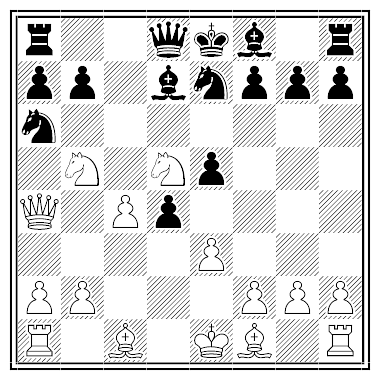
In Britain this wouldn’t be redundant — in British English an avenue is a row of trees.
Unfortunately, that’s not so in Toronto, where Avenue Road is a major thoroughfare.
Local journalist Robert Fulford called it “an identity crisis with pavement.”

In Britain this wouldn’t be redundant — in British English an avenue is a row of trees.
Unfortunately, that’s not so in Toronto, where Avenue Road is a major thoroughfare.
Local journalist Robert Fulford called it “an identity crisis with pavement.”
In an 1849 letter to his sister, Lewis Carroll asks which is more accurate, a clock that is right once a year or one that has stopped altogether. The stopped clock is more accurate, he says–because it’s correct twice a day.
You might go on to ask, ‘How am I to know when eight o’clock does come? My clock will not tell me.’ Be patient, reader: you know that when eight o’clock comes your clock is right; very good; then your rule is this: keep your eye fixed on your clock, and the very moment it is right it will be eight o’clock.
“‘But–‘ you say. There, that’ll do, reader; the more you argue the farther you get from the point, so it will be as well to stop.”
This sentence is unwritable:
There are three ways to spell /tu/.
This sentence is unsayable:
There are three ways to pronounce “slough.”

When Vesuvius erupted on Aug. 24, A.D. 79, a Roman fuller named Vesonius Primus fled toward the sea, leaving a watchdog chained to a post in the atrium of his house. It appears that the dog managed to survive the night by climbing continuously atop the mounting ash, but at dawn it reached the limit of its chain and was buried alive.
Like other victims of the eruption, its body left a vacancy in the ash layer, so a plaster cast could be made of its final position.
emacity
n. the urge to spend money
oniomania
n. an uncontrollable desire to buy things
Between 1980 and 1993, 42 visitors to Israel experienced a peculiar psychotic episode with seven consistent clinical stages:
These people had no history of psychiatric illness and arrived as regular tourists, with no special mission in mind. They recovered fairly spontaneously on leaving the country and were reluctant afterward to discuss the episode. No explanation has been found.
(Bar-el Y, et al. (2000) Jerusalem syndrome. British Journal of Psychiatry, 176, 86-90.)
A 19th-century opening manual gives this line in the Queen’s Gambit Declined:
1. d4 d5 2. c4 e6 3. Nc3 c5 4. Nf3 cxd4 5. Nxd4 e5 6. Ndb5 d4 7. Nd5 Na6 8. Qa4 Bd7 9. e3 Ne7

The authors say Black has the superior position. That may be a bit optimistic — do you see why?
The verses of Puritan poet George Wither (1588-1667) fairly glow — if by “verses” you mean “drivelings” and by “glow” you mean “suck like a tarpit”:
Her hair like gold did glister,
Each eye was like a star;
She did surpass her sister,
Which passed all others far.
She would me honey call;
She’d, O she’d kiss me too;
But now, alas! sh’ ‘as left me,
Falero, lero, loo.
When Wither was taken prisoner by the Cavaliers during the English civil war, Sir John Denham pleaded with Charles I: “I hope your majesty will not hang poor George Wither — for as long as he lives it can’t be said that I am the worst poet in England.”

Amy, Bob, Cindy, and Dave are the last four colonists on Mars, which is being overrun by Hideous Sand Beetles. The last evacuation ship leaves in 16 minutes. To reach it, they must pass through the Soul-Freezing Tunnel of Yx, which can accommodate only two people at a time. And anyone passing through the tunnel must light his way with the Fabulous Oracle of Zeb. (Mars is very dramatic.)
This is a problem. If Amy and Dave go first, they’ll reach the other side in 8 minutes (Dave’s top speed). If Amy then runs back and escorts Cindy, and then Bob, she and Bob will be only halfway through the tunnel when the ship departs. Are they doomed?
This is done by cutting a piece of apple the shape required, and sticking into it a little piece of nut or almond, to make it resemble the stump of a candle. The almond wick can be lighted, and will burn for about a minute, so that the deception is perfect. You can afterwards eat it in the presence of the company. … [T]his candle should be already in front of the audience, and should be placed in a candlestick, and if well introduced it goes down (in more senses than one) capitally.
— Frederick D’Arros Planche, Evening Amusements for Every One, 1876